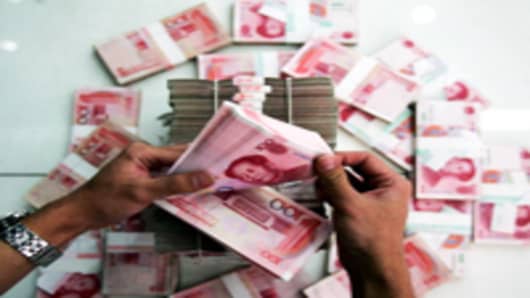The tighter it gets for monetary control in China, the louder private lending roars.
China's private lending arena – including intra-family loans, gray-zone financing, business-to-business deals, entrusted loans and more – has been expanding rapidly as the nation's bank credit contracts.
Investment capital has been migrating away from banks and their controlled lending rates toward nontraditional private lenders whose clients are willing to pay high – even exorbitant-interest rates.
Central bank policymakers find themselves in an awkward position. They've tightened monetary controls by, for example, clamping down on credit over the past year to fight consumer price inflation. But in the process, they've frustrated a broad swath of the nation's business community by raising financing costs, or blocking loan access altogether.
Inflation-fighting regulators seeking to slow the nation's consumer price index recently asked major banks to delay scheduled loans and regularly report lending activity, bank sources told Caixin.
"At present, our bank's Beijing branch requires that each branch submit the amount loaned every week, including which companies got funds and how much," said one source.
Policymakers have also forced banks to freeze lending to the credit-hungry property development sector.
"Real estate developers currently rely mainly on private lending for their cash flow," a bank executive said. "One real estate developer borrowed a few hundred million yuan at a 60 percent interest rate per annum."
Indeed, such high interest rates have not stopped an increasing number of companies from reacting to policy tightening by turning to private lenders including individuals and companies, such as steel manufacturers, said a risk control manager at a loan guarantee firm.
Annual interest rates for private loans from steelmakers are usually 36 to 94 percent, for example, at a time when banks charge some large, state-owned companies less than 10 percent.
Broad Impact
The shift in borrowing behavior is affecting the government's internal discussions over whether to let the market determine interest rates, which are now set by the central bank, as well as foreign exchange rates in the context of China's push to make the yuan an international currency.
A central bank source told Caixin that authorities currently favor shifting to market-oriented interest rates, noting that in the current atmosphere loosely regulated banks enjoy an advantage over tightly controlled competitors.
The central bank's governor, Zhou Xiaochuang, has publicly expressed concerns about high-interest-rate private lending.
During the global financial crisis, Zhou said, hard times forced financial institutions to compete for deposits by offering high interest rates or high-yield investment products. Problems arose when institutions abused the system by charging risky borrowers exorbitant rates.
However, Zhou said as banks adjusted their financing and expanded equity reform, a foundation was laid for market-oriented interest rates.
According to the central bank, total fund-raising in China climbed to 7.76 trillion yuan in the first half 2011. Bank loans accounted for 4.17 trillion yuan of that amount, which means non-bank financing controlled 46 percent of the business.
Banks today continue to lead the sector in underwriting and trading institutional debt, which means the banking sector's share of total financing through direct and indirect participation still accounts for more than 90 percent of the total market for social financing activities.
Yet Everbright Securities researchers claim banks provide 27 percent of their financing through off-balance-sheet operations, such private lending through a system of entrusted loans.
An innovative type of credit that lets banks avoid lending quotas imposed by government policymakers, entrusted loans have become increasingly popular.
Under the scheme, a client entrusts a bank with funds that are then loaned to specific borrowers, with set targets for the credit's purpose, amount and interest rate. Clients may include government agencies, companies or individuals. Banks make money by servicing these loans.
Interest rates for entrusted loans can be twice the standard lending rate for standard loans, but with the same terms.
Two Lanes
Effectively, the government's restrictions on bank credit practices and the rise of private lending as an alternative have created a two-track system for interest rates. Some analysts argue that the system hurts the resource allocation process.
Cheap credit from banks continues to be available to state-owned companies, while small- and medium-sized companies as well as private enterprises are forced to scramble for expensive capital offered outside the traditional banking system.
Some senior bank managers have thus asked monetary authorities to consider relaxing the official interest rate policy, a source close to the central bank said.
Meanwhile, a senior bank manager said interest rate marketization is expected to proceed quietly. Gradually, the market will be allowed to determine interest rates for financial products, and the marketization project will likely be declared successful once 30 percent of the products are covered.
Interest rate pricing for bank wealth management products, which in first half of this year topped 10 trillion yuan in total, is setting the stage for marketization, the source said.
However, the source close to central bank said "it's not time yet" to switch to market rates, since more progress is needed in the areas of foreign exchange reform and China's push to internationalize the yuan.


